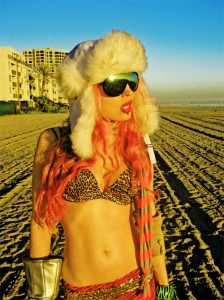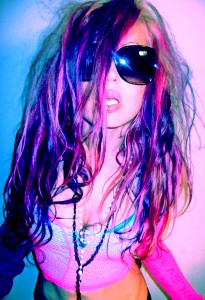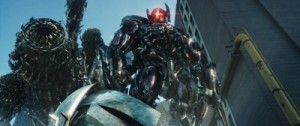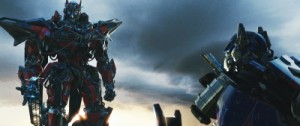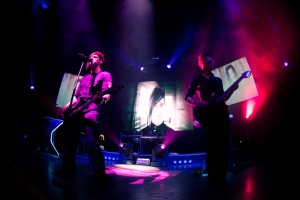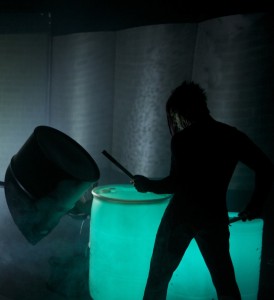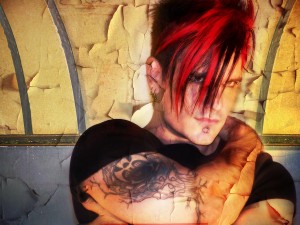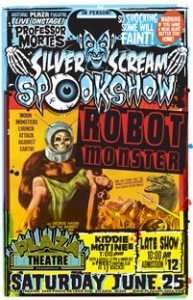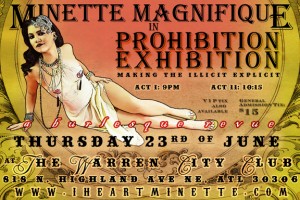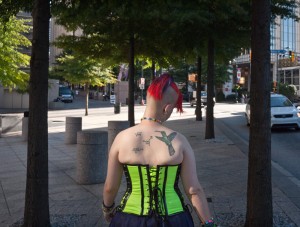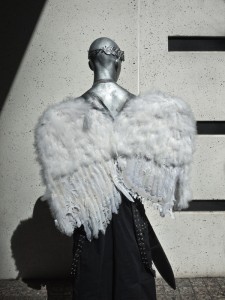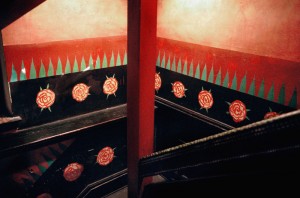During the ’90s, World Championship Wrestling rose to Monday night dominance over the World Wrestling Federation (now WWE) with WCW Monday Nitro, which went head-to-head with WWF Monday Night Raw for more than five years. Though WCW eventually lost the Monday Night Wars in 2001, Nitro definitely provided some exciting times that wrestling fans still recall fondly to this day. With The Very Best of WCW Monday Nitro, WWE honors its former foe with a three-disc set of Nitro highlights hosted by one of WCW’s biggest stars, “Diamond” Dallas Page. Page talks to Wrestling with Pop Culture about the Nitro DVD and the memories it brought up for him.
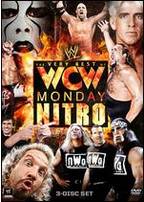 Former WCW stars Kevin Nash and Booker T recently returned to WWE, and there are still plenty of other people from WCW in the company. How did you end up hosting this DVD?
Former WCW stars Kevin Nash and Booker T recently returned to WWE, and there are still plenty of other people from WCW in the company. How did you end up hosting this DVD?
It was interesting because when they first asked me if I was interested in doing it, I was like, “Hell, yeah. I’m interested. I’m honored!” But I wanted to see the copy because it was very important to me what was said there. After I saw it, I said, “You don’t really want me to do this.” And they were like, “What do you mean? We want you to do it.” I said, “I just wouldn’t say some of these things about WCW. I want to talk about the best of and keep it really positive.” And they said, “Well, change it.” WWE really wanted to do something really cool and I actually talked to some friends of mine because I wanted to know what the fans wanted to see. So they gave me some great ideas and WWE was like, “Great!”
At the end of the video I say that it’s a crime to try to fit six years into one production. I hope people get to see some of your favorite stuff, but they sure missed a hell of a lot of mine. That’s why I say at the end that I’m ready for volume two. I liked what they did, but there’s so much that WWE could do with the footage they have. You could do a DVD set just on mine and [Randy] Savage‘s feud. Never mind Sting and [Hulk] Hogan. You could do three sets of DVDs on just the New World Order, maybe ten.
Have there been talks about doing a DDP DVD?
If this one sells well, a DDP DVD might be a good idea. I’d put my career up against anyone’s in terms of things that have never been done before. I would never compare myself to Ric Flair or Shawn Michaels or Dusty Rhodes. I don’t have the talent that those guys did, and I have monster respect for all of them. But I am the anomaly. No one did what “Diamond” Dallas Page did. I tried wrestling at 22, didn’t work out. When into the night club business, came back as a manager at 32 in the AWA [American Wrestling Association], worked one day a month, which got me on TV every week. Then I went to Championship Wrestling from Florida and worked under Dusty after he left the NWA [National Wrestling Alliance] and started his own territory. I didn’t know a wristlock from a wrist watch and the next thing you know I’m doing color commentary next to Gordon Solie. Then I tried out for the WWF, at the time, and WCW, and both of them passed. Then Dusty brings me in as a manager at WCW and they say I’m too over the top to be a manager. Magnum T.A. said, “We should have put you in a pair of tights and seen what you could do.” So I became a wrestler at 35 and the rest is history. No one ever did, or will ever do, what I did.
You’re also the one who brought Kevin Nash and Scott Hall into WCW originally as Vinnie Vegas and the Diamond Stud.
Exactly! I created Scott Hall’s character, which became Razor Ramon. Scott would be in the car with me doing impressions of Tony Montana from Scarface and that became “The Bad Guy.” The thing with the toothpick, we were walking out of a freaking Waffle House and I grabbed a toothpick and said, “Oh, I’ve got a great idea. When you do an interview, flick your toothpick into the camera.” Then I tagged with Kevin Nash and we were green, but we could work. That’s when I tore my rotator cuff, got fired, came back and they sat me on the bench. It took Hulk Hogan telling me over in Germany, “I don’t know what you’re doing to keep getting so much better, but whatever you’re doing, keep doing it. You and I have the ability to draw huge money together.” Then Hulk went to Eric [Bischoff] and said, “You need to do something with him.” That’s when I started getting the little pushes and we all know what happened from there. Then I became the oldest World Champion.
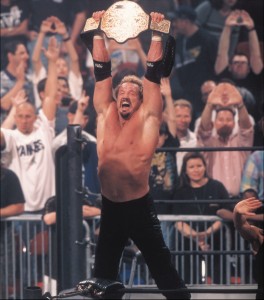 While watching one of your World Championship matches against Sting on this DVD, I was reminded of the signs people used to hold up at shows back then. There’s a great one that says, “DDP: The Hippies’ Champ.”
While watching one of your World Championship matches against Sting on this DVD, I was reminded of the signs people used to hold up at shows back then. There’s a great one that says, “DDP: The Hippies’ Champ.”
Yeah, that one would show up occasionally and I thought it was funny. You know, Sting was the only guy who could get away with never turning heel.
Yeah, even when he joined the New World Order he wasn’t a heel.
Right. The red-and-black were babyfaces. So it was just easier to work as a heel against him. I knew how to do that and he’s one of the few guys I could do that with. Goldberg, too. I flipped myself, and Bischoff was mad as hell at me for doing it. What happened was I came back and was in an angle with Scotty Steiner. I had never been to Toronto and I came out and the place went nuts. When I started talking about Steiner, they cheered and I thought they were cheering Scotty. They were really cheering the angle, but I turned on the people and cut a vicious promo. I remember going back and Bischoff saying, “What are you doing turning yourself heel?” I said, “The people were cheering for Steiner and I got pissed!” And that was all reality based, so I went with it. But he was like, “You’re one of our top babyfaces! You can’t just flip like that.”
Another moment that was missing from the DVD was when the nWo was really trying to get you to join and it looked like you were about to, but then someone jumped you from behind.
It was Dennis Rodman and Hulk Hogan.
I was surprised that wasn’t on the DVD, especially after the part where you say something to the effect of, “Who was the only superstar to never join the nWo? We’ll get to that later.”
I really wanted them to put the La Parka match in there. That was one of the greatest Nitro moments ever, and they said they liked it, but they didn’t put it in there. I can’t remember why they didn’t.
The whole thing with the nWo was the bookers at the time didn’t want me to drop the nWo. It was my idea and they drew that out for so long. It was the best thing that ever happened to me. There’s something positive that comes out of everything, you’ve just got to keep looking for it. I was a heel and I never fucking changed my promos. Just like Steve Austin in ’97, I just turned my disdain and disgust for the fans to the nWo. That’s all I did. And at some point I became a pure babyface, but that took years.
The same thing happened with the Four Horsemen and several others. It was WCW vs. nWo, so it didn’t matter if you were a face or heel.
One thing that was huge to me was Sting going into the rafters. The only babyfaces we really had were the Big Show [then known as the Giant] and Lex Luger. And Lex was 6’4″, 290 pounds of pure chiseled steel, so they had to beat Lex down. I had a legitimate angle with these guys because I was really tight, best friends, especially with Kevin.
Now that you’ve done this DVD with WWE, are you working on any other projects there?
I’m open. I went in to promote the DVD on Raw and it was great having fun with Booker in the back. There are four guys I really wish I could have worked with. One being the Rock, of course, so it would be the People’s Champion vs. the People’s Champion. Shawn Michaels would absolutely have been another. Triple H and Stone Cold are the other guys I really wish I had been able to work with. But interacting with Shawn on Raw was cool.
I’m really glad I did the DVD set and it would be a natural fit for them to keep me as a host. When people think of Nitro, they think of “Diamond” Dallas Page because I was there from the get-go to the ending. Goldberg was made over that time period, but I was there when we were nothing and we were way down the ladder. And I can remember Eric Bischoff saying, “We’re going to kick Vince McMahon‘s ass.” And I’d be thinking, “What are you smoking, man? How can you even say that?” But first you’ve got to say it and believe it, or else you’re never going to achieve it. And he did. I was there with him for that whole ride.
That Raw segment with Booker T and Shawn Michaels was great, when Michaels said he missed Nitro because he always had to work that night.
Yeah, that was great! It’s total bullshit because we all watched everything we all did. But he was working that thing when he said, “I’ll check that out.”
Sting was obviously a big part of WCW, and a lot of people think he deserves to be in the WWE Hall of Fame. Do you think he’ll ever go to WWE before he retires?
No, I don’t think so. Now that it’s PG, there might be a chance. But I think if Sting comes in it will be under his terms. He’s 52 now and he’s still out there doing his thing. I know how hard it is because I did house shows until I was 53. I don’t want to do it anymore. For Stinger to come back, what does he have to prove? The reason why he could do it is the face paint. He’s kind of ageless. I think he’ll be in the WWE Hall of Fame regardless. Sting is a guy they really want and I think they would do something really good with him.
For more information, go to www.wwe.com and www.diamonddallaspage.com.



